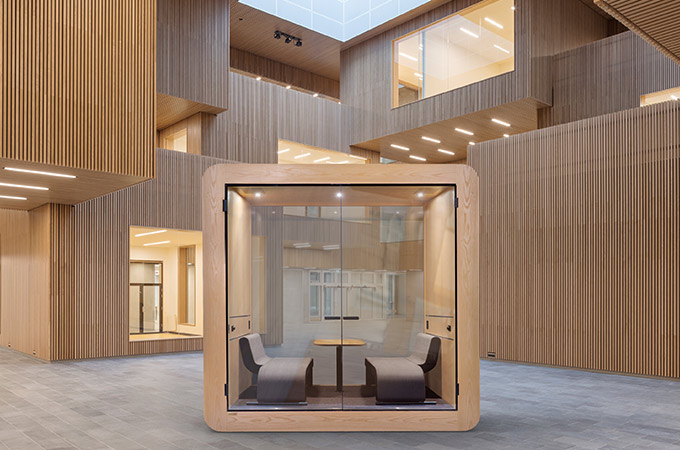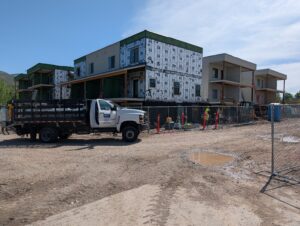Neurodiversity refers to the concept of neurological or developmental differences which lead to differences in the way we think. This includes learning disabilities, ADHD, dyslexia, dysgraphia, dyscalculia, Tourette’s, autism, acquired brain injury, and more. While most individuals with these neurological differences get classified as being not “typical” or “normal”, their diagnosis does not necessarily define who they are, nor should it limit their ability to access a built environment.
Neurodiversity and Accessibility
The term neurodiversity was coined by Judy Singer in the late 1990s. She states that, “Neurological differences like autism are just that, neurological differences.” This stance is aimed at increasing the acceptance and inclusion of all people while embracing neurological differences. Similar to diversity in ethnicity, gender, and sexual orientation, there is a diversity in brains. With this in mind, accessible design should not be an afterthought. It should be implemented in the preliminary stages when designing a new building or space.

Design for Well-Being
How does this relate to architecture and design? The AIA’s Framework for Design Excellence is comprised of 10 principles which seek to inform progress toward a zero-carbon, equitable, resilient, and healthy built environment. Within these principles, we have Design for Well-Being, which explains how design, in particular good design, supports the health and well-being of all people. Excellent architects and designers know that good design affects the physical, mental, and emotional health of building occupants. Such factors include natural lighting, indoor air quality, and thermal comfort among other things.
Accommodating Sensory Sensitivities
Neurominorities, another way of describing neurodivergent individuals across the range of possible experiences, often deal with sensory issues and may have sensitivities with sights, sounds, smells, touch, and other things. Autistic people often experience hypersensitivity to bright lights (such as LED or fluorescent lights), sounds, or smells, which result in sensory avoidance. Sensory avoidance is related to sensory overload, which occurs when your brain becomes overwhelmed with more information that it can process, resulting in the avoidance of certain stimuli i.e., loud noises or music, large crowds, a smelly cafeteria, etc.
Like hypersensitivity, there is hyposensitivity, which is a decreased sensitivity to sensory input, resulting in constant need for movement, or difficulty recognizing pain, hunger, or illness. While experiencing sensory issues, autistic individuals may display certain behaviors such as covering their eyes or ears, repetitive noises, hand flapping, avoiding physical touch, frequent touching, standing too close to others while talking, talking fast or loudly, or not talking at all.
Designing With Everyone In Mind
Designing schools, workplaces, healthcare settings, and communities to be sensitive to the needs of the neurodivergent community is extremely beneficial to both neurodivergent individuals and their wider communities. Creating an environment where all individuals can co-exist and engage allows for increased and equal opportunities for neurominorities. Not only does this create a safe environment but it allows for neurodivergent individuals to perform at their full potential. One way to help those with sensory issues is by providing spaces where they can escape loud areas. Acoustic pods are immensely helpful to neurominorities because they create a relaxing and controlled environment, and in some cases, the temperature of the pod can be controlled as well as the lighting.

Spotlight on Lighting
Lighting matters. Using as much natural light as possible and avoiding harsh artificial lights are ways to limit visual stressors. Installing translucent skylights and wall systems provide natural daylight while preventing glare and eliminating exterior distractions. Natural daylight is also linked to improving one’s mental and physical health, boosts morale, motivation, and overall health. Providing acoustic privacy screens throughout the building helps minimize distractions and noise.
Turning the Tide for Inclusive Design
Neurodiversity is often a misunderstood aspect of disability, and is not often considered as part of diversity, equity, and inclusion campaigns. Architects, engineers, and interior designers can help turn the tide in making the world a more accessible place by designing built environments with accommodations for neurodiversity. Beautiful, efficient, functional spaces for everyone can also be inclusive. Design with neurodiversity in mind is the future of architecture.
Work with a team that has the vision and depth of understanding to make inclusive design the core of how we approach your project, and let us know what EVstudio can bring to life.









